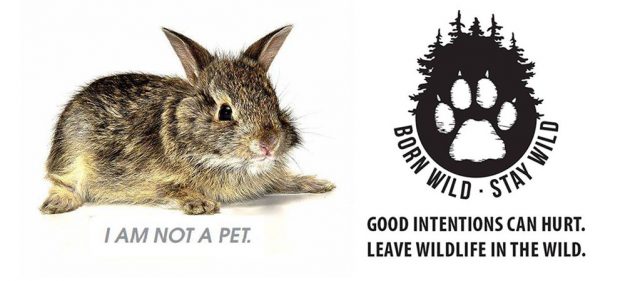Ohio – In the spring and early summer, when wildlife reproduction is at its peak, you may have the good fortune of observing baby animals in the wild. Often, the babies you see will be unattended by a parent. Unless something seems amiss, keep your distance and leave them alone. Human intervention is always a wild animal’s LAST hope for survival, NEVER its best hope.
Why is it always best to leave wildlife in the wild? Below are just a few reasons!
>> A baby wild animal’s best chance for survival is with its mother.
>> Wild animals are born to live their lives in the wild, not in a house or a cage.
>> An animal that has become habituated to humans cannot be returned to the wild.
>> Once they grow, wild animals are active and independent, which can make them dangerous and destructive.
>> Wild animals have complex nutritional needs not easily met in captivity. Nutritional deficiencies can leave an animal deformed for life.
>> Wild animals can carry diseases and parasites, some of which are transmissible to people or pets. Some diseases, like rabies, can cause serious human health problems.
>> It is illegal to possess, restrain, or keep any wild animal. The purpose of the law is to protect wild animal populations and to protect people from disease and injury.
Remember wildlife parents are very devoted to their young and rarely abandon them. Many species are raised by only one parent (the mother) and she cannot be in two places at once. This means that baby wildlife must be left alone several times during the day or even the majority of the time while the mother ventures off to find food for herself and her young.
The best thing to do is to keep your distance and keep children and pets away from the young animal. This is to protect both humans and wildlife. Wild animals can carry parasites or diseases that can be harmful to humans and pets. Wild animals also defend themselves by scratching or biting.
If you do find a baby wild animal in need, be sure to consult wildohio.gov/staywild on what to do first!








